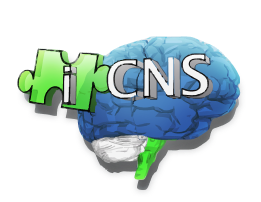A Stroke of Insight
- Katherine Novian

- Aug 10, 2009
- 3 min read
Updated: Mar 3, 2020
By Dr. Allen Novian
Last week, I was very fotunate to attend a presentation by Jill Bolte Taylor PhD at the UT Health Science Center. If you haven’t heard of her, then please click HERE to a youtube video presentation and you will get some idea of the passionate woman and message I heard last night. Dr. Taylor spoke about her “Stroke of Insight.” What’s that and why is it important to me? Well, her stroke of insight came literally as the result of a massive stroke she experienced 13 years ago to the left hemisphere of her brain. Prior to the stroke she described herself as the “golden girl of the Havard Neuroscience Neuroscience Department.” After the stroke she became an “infant in an adult woman’s body.” She couldn’t talk, walk, or care for herself but what she discovered during her 8 year recovery was a new way to live. A way that provides an opportunity to have peace at any moment. Her stoke of insight that came to her as the result of learning to live in her right hemisphere. Dr. Taylor came to the realization that peace is always just a thought away. Sound too good to be true? Well it’s not.
You see, Dr. Taylor is not just a stroke survivor. She is one of the leading experts in Neuroscience. Her theory is that everything we experience is the result of our neurocircuitry (thoughts, emotions, physiology) being activated and the amazing point is that we can pick and choose the circuits we run moment to moment. Most of the time we are running the circuits of the left hemisphere of our brain which is reponsible for language, picking out the details of an experience and putting the details in order. The left hemisphere also makes critical analysis based on the past and future, jusdges right and wrong, is confrontational, and always has a sense of urgency about everything. The right hemisphere of your brain is pretty much the exact opposite of the left. The right hemisphere thinks in pictures, is kinestic (body focused), always in the present moment, and looks at the big picture. The right hemisphere also seeks to find similarities, percieves energy, is compassionate, nonconfrontational, is lost in the flow of life, and is joyful. Dr. Tayor mentioned that, due to her stoke, for most of her recovery she was forced to live completely in her right hemisphere which she commented wasn’t a bad way to live as an individual. However, is was a horrible way to live in relationship to others since she had very limited access to communication due to not being able to access language until her left hemishere began to heal.
Dr Taylor’s message was that while you don’t want to live in the right hemishere every moment of every day, you do want to go there periodically every day. She mentioned that gaining a balance between your left and right hemisphere is crucial to maintaining physical and mental health. All too often we get caught up in living in the details and judgements of the left hemisphere and the circuits become so wired together that it feels uncomfortable to experience the joy and peace found in the right hemisphere. Her message, which I completely agree with, is that life is about balance. One of the most important parts that we need to keep in balance is how much time we spend in our left and right heimispheres on a daily basis.
So the next time you are experiencing anxiety over the past or future, being critical of yourself or others, or finding yourself in a state of panic due to a sense of urgency about something, simply do what Dr. Taylor suggests and make the choice to take a moment and step into you “RIGHT MIND” by slowing down, taking a deep breath, and realizing that only part of your brain is overwhemed the other half is just waiting to bring you peace and joy in this present moment.


Comments